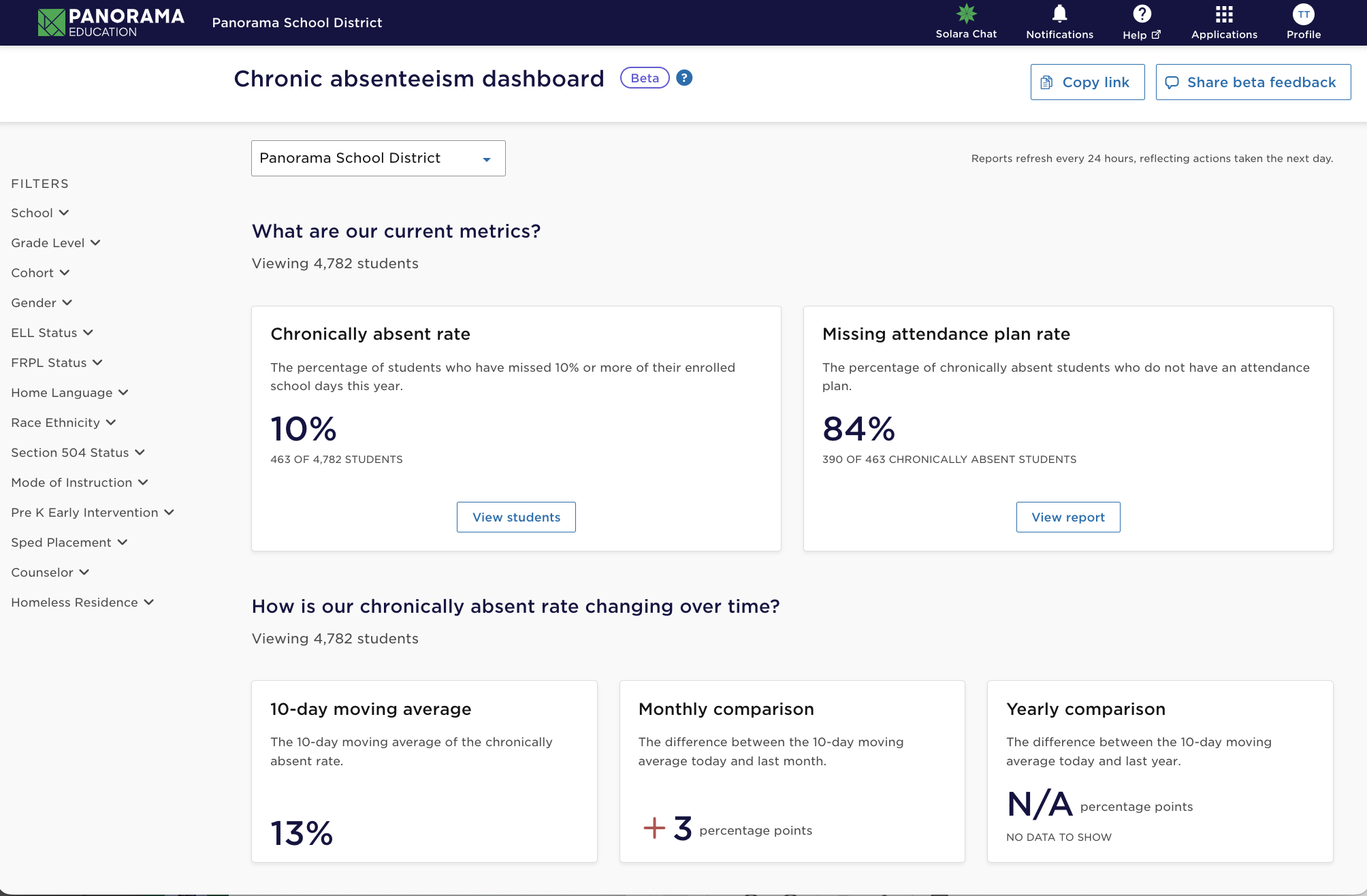Chronic absenteeism, defined as missing 10% or more of school days, has notably increased since the COVID-19 pandemic. In fact, annual chronic absenteeism rates—reflected in Panorama’s own data—nearly doubled from 2018-19 to 2023-24.

To help you uncover what you can do about this critical issue, Panorama Education’s Data Science and Applied Research Team completed an extensive study on the state of chronic absenteeism. Using Panorama’s unique national data, we’ve analyzed the complete attendance information for over 7,000 schools and 11 million student records. Here's what we found:
1. The School That a Student Attends Matters to Absenteeism
Controlling for student attributes, learning needs, and school poverty level, we found that factors within a school's locus of control—such as safety and engagement—can influence a student's likelihood of being chronically absent by as much as 22%.
2. Specific Survey Topics Correlate Strongly With Chronic Absenteeism
School safety and climate are most linked to absenteeism in elementary and middle schools, with social awareness most linked to absenteeism in high schools.
3. The Most Important Topics That Affect Chronic Absenteeism Vary by Grade Level
We found that the topics correlating with absenteeism differ by grade level. This insight can provide district leaders with a helpful lens for addressing absenteeism effectively with age-appropriate solutions.
Here are the specific topics that correlated with absenteeism in elementary, middle, and high school, comparing students in the lowest quartile to those in the highest quartile:
Elementary Students:
- Those with low self-efficacy, self-management, and school safety ratings are 1.5 times more likely to be chronically absent.
Middle School Students:
- Those with low self-efficacy ratings are 1.9 times more likely to be chronically absent.
- Those with low school climate and school engagement ratings are 1.8 times more likely to be chronically absent.
High School Students:
- Those who don't value school are 1.9 times more likely to be chronically absent.
- Those with poor relationships with teachers are 1.8 times more likely to be chronically absent.
- Those with low self-efficacy are 1.7 times more likely to be chronically absent.
 The top ten questions most linked to end-year chronic absenteeism rates in high school. In the full report, we provide an in-depth look at the top survey questions most linked to absenteeism by grade level.
The top ten questions most linked to end-year chronic absenteeism rates in high school. In the full report, we provide an in-depth look at the top survey questions most linked to absenteeism by grade level.
Next Steps and Strategies for District Leaders
The rise in chronic absenteeism is a complex issue, and understanding its root causes is essential to reversing the current trend. This study, along with prior research, provides valuable strategies that school and district leaders can use to create more inclusive, supportive, and engaging learning environments. By listening to student voices and combining their insights with an understanding of absenteeism trends across the district, leaders can implement meaningful and targeted supports.

Research-Informed Strategies to Boost Attendance
The full report outlines specific, research-informed strategies that district and school leaders can implement to address some of these root causes of chronic absenteeism. Inside, you’ll find:
- Key actions for improving school safety, with strategies for each grade level
- Ways to take action on Panorama’s research to foster a positive school climate
- Strategies to get students actively involved and connected at school—so they are more likely to attend regularly and succeed academically
By leveraging the right resources and interventions, school and district leaders can make significant strides in reducing chronic absenteeism and enhancing the educational experience for all students. This is an opportunity to make a lasting impact—one that addresses the immediate challenges of absenteeism and also paves the way for long-term student success.







